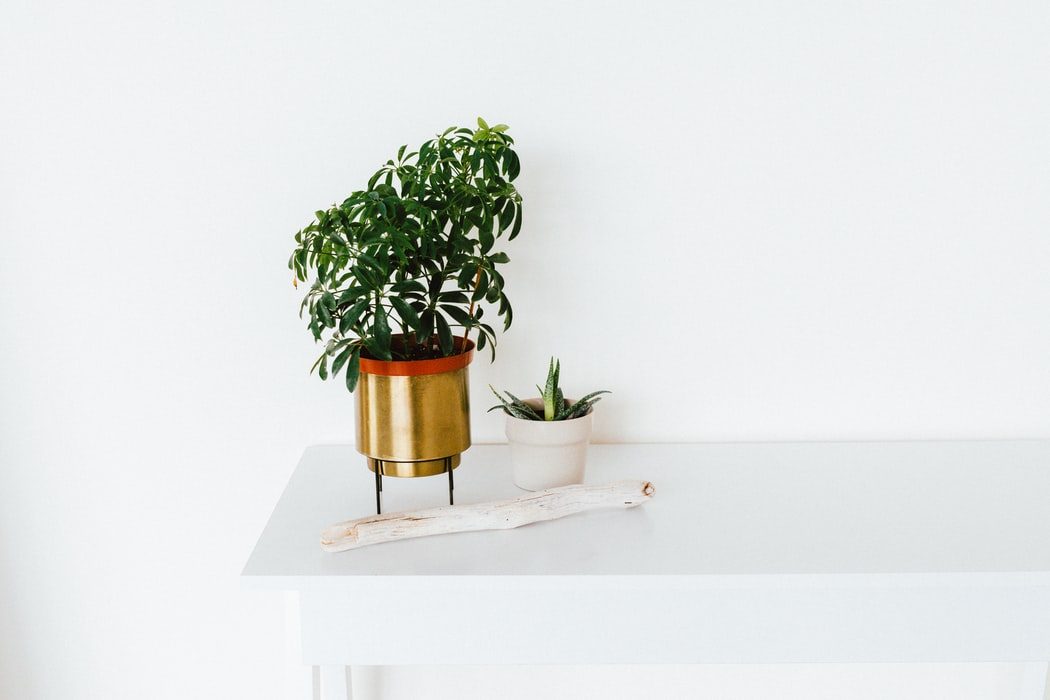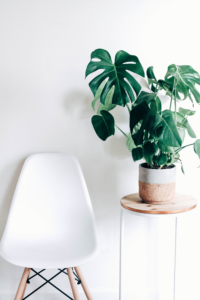Plants produce oxygen, add humidity, and filter toxins in our indoor environments. Only recently, have we begun to see the positive impacts of plants on our physical and mental health. When NASA needed a cheap and simple way to filter air on their space stations, they turned to common houseplants. While our homes and offices are different from air-tight space stations, the results of the NASA Clean Air Study helped us see the abilities of plants in reducing pollutants like benzene, formaldehyde, trichloroethylene, xylene and toluene.
The plants listed below are just a few of the best-performing, easy-care houseplants for removing indoor pollutants. Remember to always consider the safety of indoor plants for pets as some can be toxic when ingested. Some additional resources to support houseplant care include:
– What to Expect When You’re Becoming a Plant Parent
– 11 Indoor Plants for Your Diy Home
– A Comprehensive Guide to 20 Air-Purifying Plants
ZZ Plant
ZZ plants are succulents that thrive in low to bright indirect light and are not suited for intense, direct light. They can survive cycles where you might forget consistent watering as they conserve water by storing it in rhizomes under the soil. A good beginner plant, ZZ plants are known to be adaptable under a wide variety of conditions but are unfortunately not ideal for homes with pets as all parts of the plant are poisonous when ingested.
Bird’s Nest Fern
This fern has long, crinkled leaves and prefers medium, indirect light. Often found in jungles around the world, the bird’s nest fern will thrive in warm, high humidity areas. Not known to be poisonous, this plant is safe to have around pets and babies.
Snake Plant
Snake plants come in countless variations, with each having long, upright foliage. One of the most tolerant houseplants, snake plants can survive periods without water in addition to low-light conditions. While low-maintenance, snake plants like to have their leaves occasionally wiped down to remove any dust or household particles. Note that snake plants are moderately poisonous when ingested.
Peperomia
Peperomia plants come in many varieties, sizes and colours, from green to purple. These plants are small and bushy and can tolerate a wide range of light and humidity conditions. Water peperomia sparingly every few weeks as they prefer to be on the dry side. Perfect for your cubicle or home office, these plants are also not known to be toxic when ingested.
Pothos
The pothos is one of the easiest to care for houseplants. Known for its long, winding stems, and heart-shaped foliage, a pothos plant can even thrive under low light. Extremely tolerant, pothos prefer to be watered once a week but can stand irregular watering. However, consider where you will place your plant as it is mildly toxic and can cause burning in the mouth when ingested.
Rubber Plant
Rubber plants are easygoing and can tolerate a range of indirect light conditions. Particularly good at removing formaldehyde in the air, rubber plants are ideal for areas where glue laminated furniture is present. Known for its sap, which is used to manufacture latex, rubber plants can have dramatic, dark green and purple foliage. If underwatered, your rubber plant will droop slightly but will return to normal with a thorough watering. Keep this plant away from babies and dogs, as it is toxic when consumed.
Aloe Vera
Great for purifying your indoor air and for treating sunburns when needed, the aloe vera plant makes for a low-maintenance and useful houseplant. While they prefer a watering every two or three weeks, it is drought-tolerant enough to withstand periods where you forget to water it. While they thrive in bright sunlight, aloe plants can also tolerate indirect light. Be sure to keep the light levels consistent, as just like humans, aloe can “sunburn” if you move your aloe plant too quickly from a shady to sunny place. Consider placing your aloe plant near where you sleep as it releases oxygen at night and can purify the air while you sleep.
Peace Lily
Not a true lily, but rather a member of the calla lily family, peace lilies have bright green foliage and delicate white flowers. Fast growing and low-maintenance, these plants will droop if they require watering. Once watered, ideally once or twice a week, their leaves will revive.






